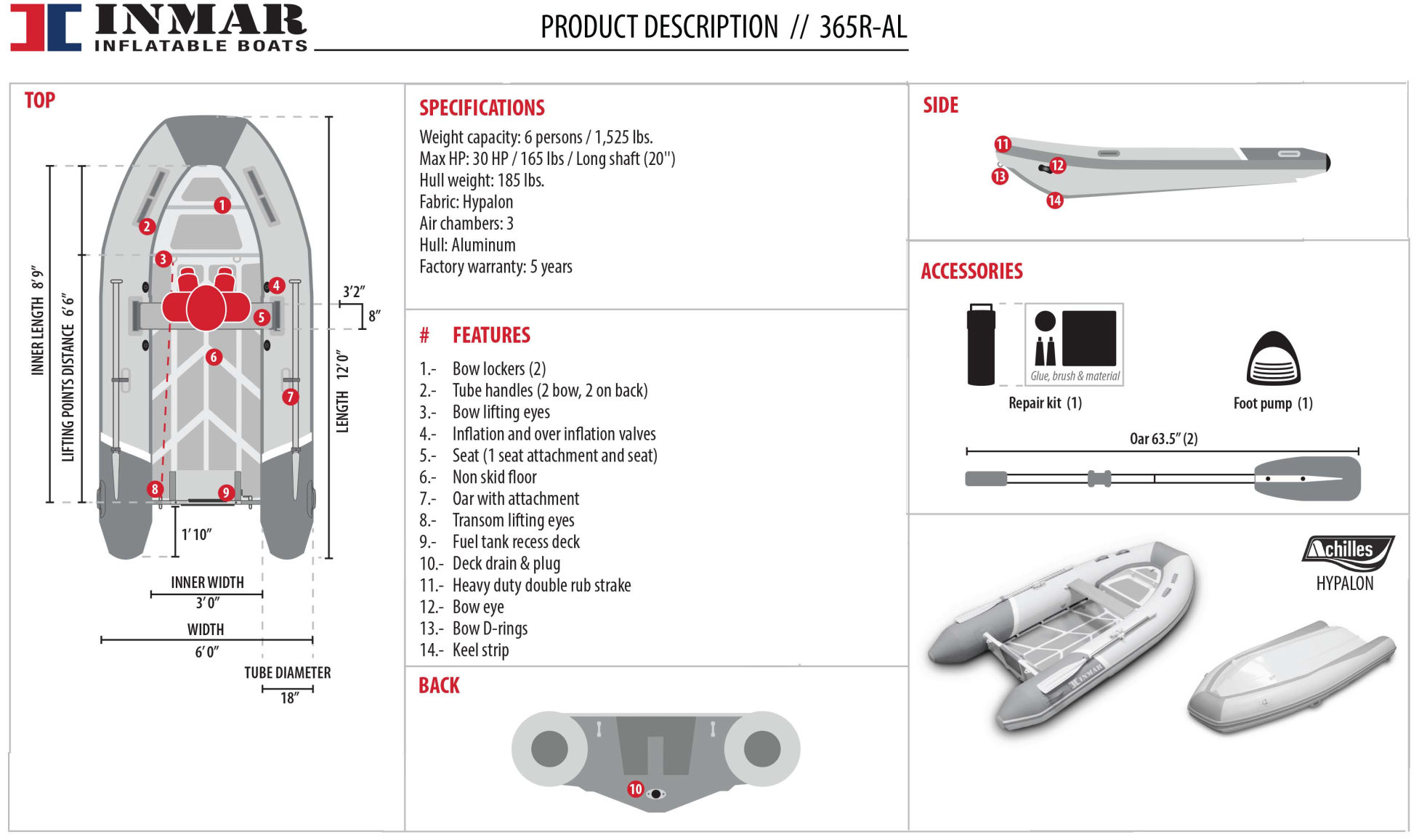

When it comes to a Tender or Dinghy, everyone is looking for something specifically tailored to their individual needs... and we are no different. Here are our top 10 requirements when looking at a tender or dinghy, the 'car' for your boat.
When it comes to hulls on a Tender or Dinghy, there are three options, Carbon Fiber, Fiberglass or Aluminum. Here are our thoughts on which is the best hull material for our needs. We have five areas of comparison:
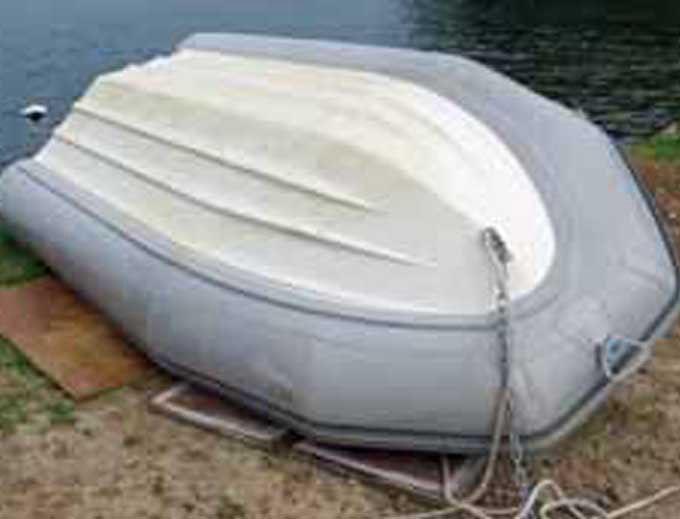
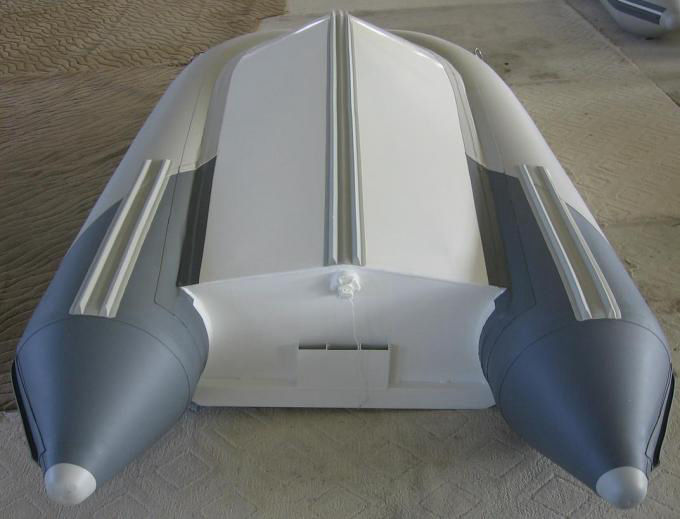
Though fiberglass hulls seem to have a lot going for them, in the end, we prefer the better durability of the aluminum hulls for beaching. Carbon fiber is a lot stronger than fiberglass, and more scratch resistant, so we did not rule out that option. Therefore, in the comparisons (below) all of the contenders have aluminum or carbon fiber hulls.
Inmar, Model 365R-AL
Next is the 12' inflatable from Inmar. She is a light weight boat at 185 pounds Hypalon even though she has twin decks and a deep V hull. This boat is listed as 6 passengers, which is less than we would like, but has a 1525 pound load carrying capacity, so we could squeeze in a couple more! Like our three top contenders, the 365R-AL has 18" tubes, so that's a big plus. The max hp for the outboard is 30 hp, so that works for our 25 hp outboard.
In features, the 365R-AL compares well against the ZAR Mini and North Atlantic and comes in at a good price of only $5,595, plus tax and transport equals $6364.86 total. Because the dealer is fairly local, there are no delivery costs to us. That makes the 365R-AL the best priced boat we are considering if you take shipping and tax into account.
Standard Features:
Non-skid aluminum hull with deep "V", bow locker (fuel tank space with straps), double wall floor, aluminum outboard mounting plate, self bailer, leafield valves, over inflation valve, molded handles, heavy duty full length rubstrake, (3) davit lifting points, bow tow rings, oar locks with oars, removable rowing seat, foot pump with gauge, repair kit.
Her only real negatives are that she is only 12' long, losing six inches to the Zar and N. Atlantic, and Inmar isn't a world wide boat distributor, like Highfield or ZAR, hence, the lower price. Still, there are advantages to the 12' length, as it will be an easier fit between our sugar scoops.
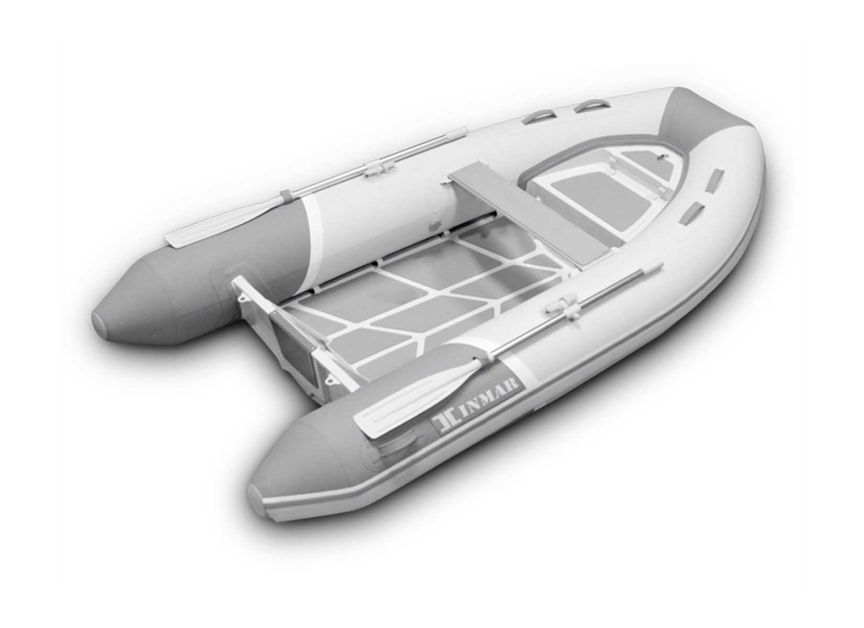
| Tenders | Weight | Pts | People | Pts | Hull | Pts | Tubes | Pts | Length | Pts | LCC | Pts | Price | Pts | Lasts | Pts | Total |
|---|---|---|---|---|---|---|---|---|---|---|---|---|---|---|---|---|---|
| Zar Mini 13 | 201 | 16 | 7 | 5 | Deep-V | 7 | 18" | 12 | 12'6" | 7 | 1512 | 8 | $10,600* | 10 | 10 yrs | 4 | 64 |
| ALA380L | 195 | 16 | 6 | 4 | Deep-V | 7 | 18" | 12 | 12'8" | 5 | 1550 | 8 | $6,324* | 16 | 10 yrs | 4 | 69 |
| HF_CL380 | 183 | 17 | 7 | 5 | Modr._V | 5 | 17" | 8 | 12'6" | 7 | 1404 | 7 | $7,214 | 14 | 10 yrs | 4 | 63 |
| Inmar365R | 185 | 17 | 6 | 4 | Modr._V | 7 | 18" | 12 | 12' | 6 | 1525 | 8 | $6,365 | 16 | 10 yrs | 4 | 74 |
| OC400 | 147 | 21 | 6 | 4 | Shal._V | 3 | Hard | 12 | 12'10" | 5 | 1327 | 5 | $14,000 | 7 | 30yrs | 21 | 66 |
Our top desires are low weight, double floor, large tubes, and 12' length. The total price also figures in heavily as well. So, looking at those factors, the Zar Mini RIB 13 and the Inmar 356R-AL were our top contenders.
They are very similar in features, with the main differences being that the Zar is 6" wider, and 6" longer, while the Inmar is 16 pounds lighter and $4,300 less expensive! (That was a big one).
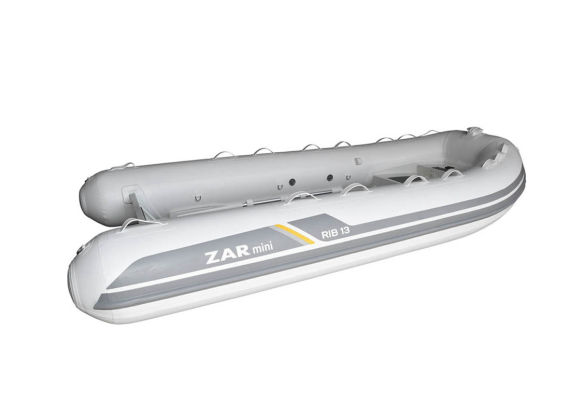
Therefor, the Inmar 365R-AL came in as our #1 boat, 5 points ahead of the North Atlantic, 8 points ahead of the OC, and 10 points ahead of the Zar.
We will pare a Zerojet 25 hp electric outboard and have a Spirit 1.0 Evo as a backup motor (see below). As for which outboard we will use on our tender, that's up next.
Though we like the North Atlantic, OC, and Zar boats, the Inmar won out on a combination of price, weight, and having all our desired features, so that is the boat we ordered.
Sea trials and videos to follow once we get our Zerojet Outboard in 2026.
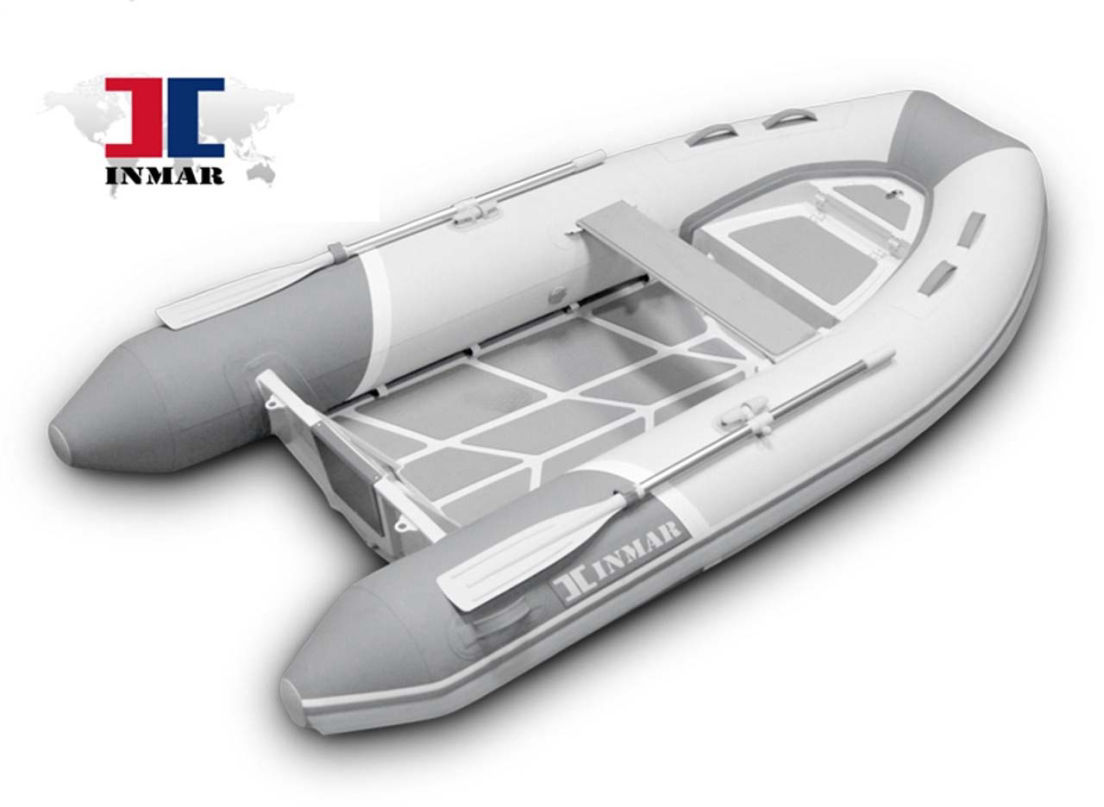
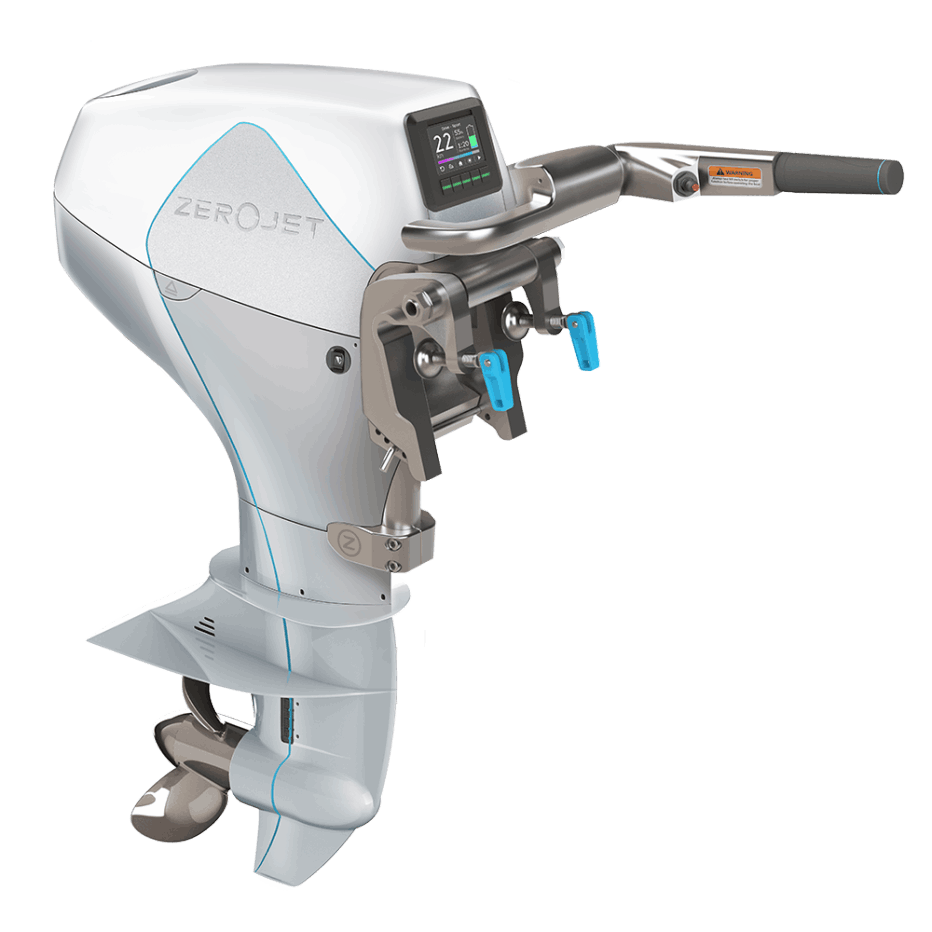
There are advantages and disadvantages to these three options, as follows:
Originally, we decided to buy an electric outboard, but couldn't find one that was powerful enough at 48volts and was powered by LifePo4 battery chemistry.
But that has recently changed! Zerojet has come up with exactly what we are seeking, a 20kw (25 hp) electric outboard that runs on 48v LifePo4 batteries, and weighs only 83 pounds!
Perfect!
Therefore, we have chosen a the Zerojet 20kw electric outboard over the gas outboard or jet. It is lighter to remove the outboard easily when we want to change convert from a fast tender to a slow, but light dinghy. We can lift out one or two 5kw batteries separately, which weigh about 110 pounds each.
We can also configure the tender for lighter weight, using just one of the two 5kw batteries if we don't need more range.
Below is the electric outboard option we are purchasing.
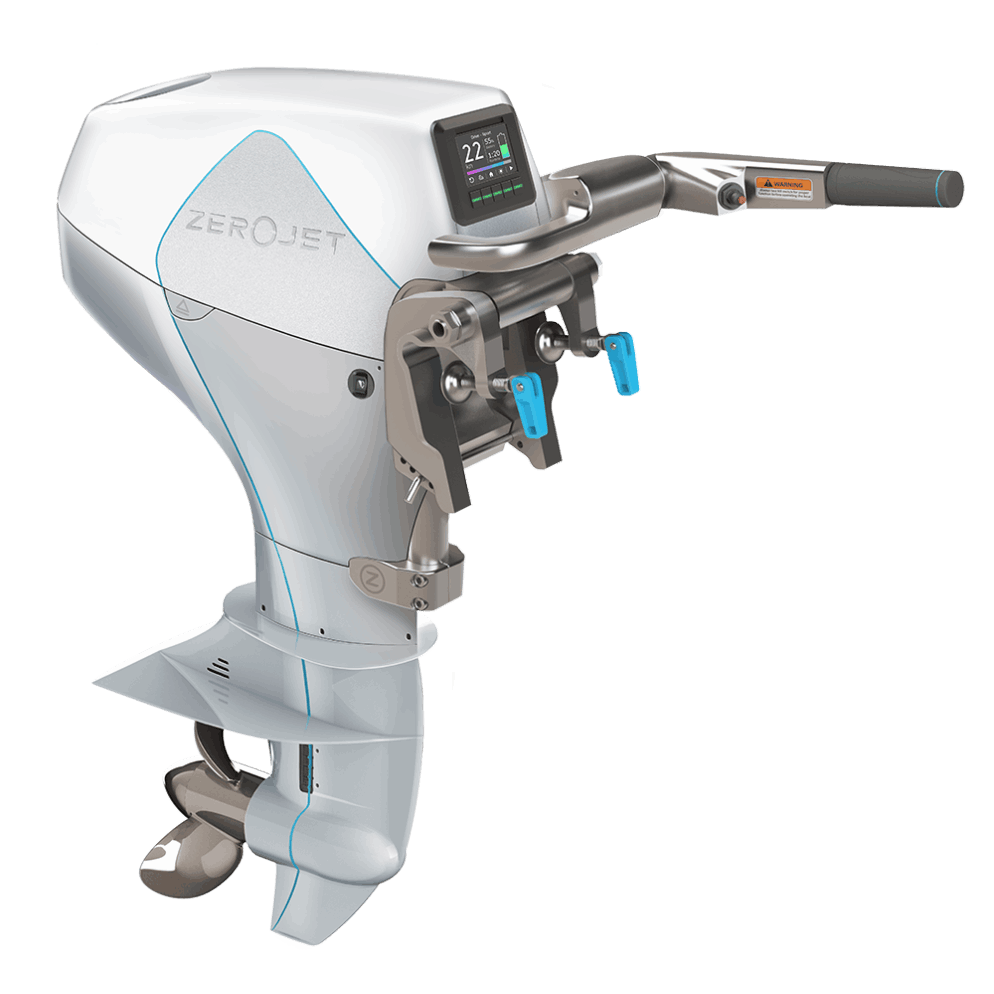
Zerojet Electric Outboard
Below are the two gas outboard options we considered before deciding on the Zerojet.
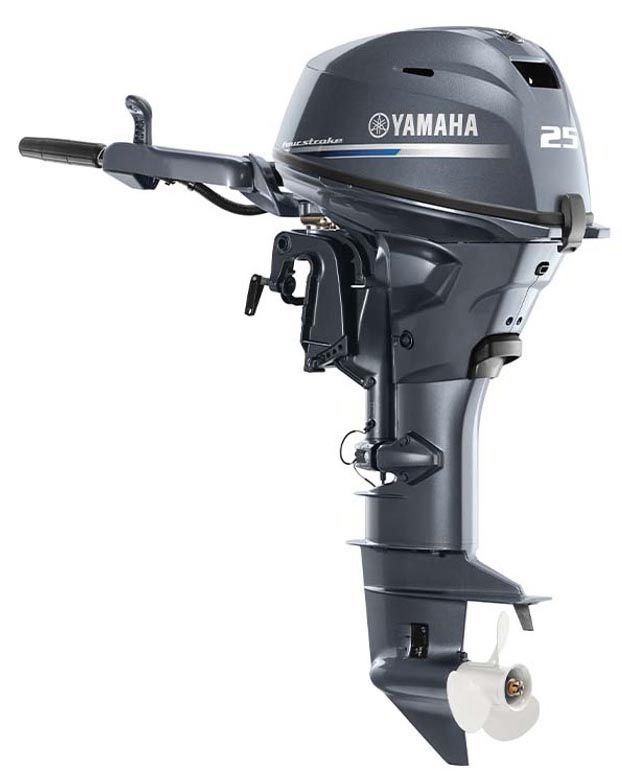
Yamaha F25
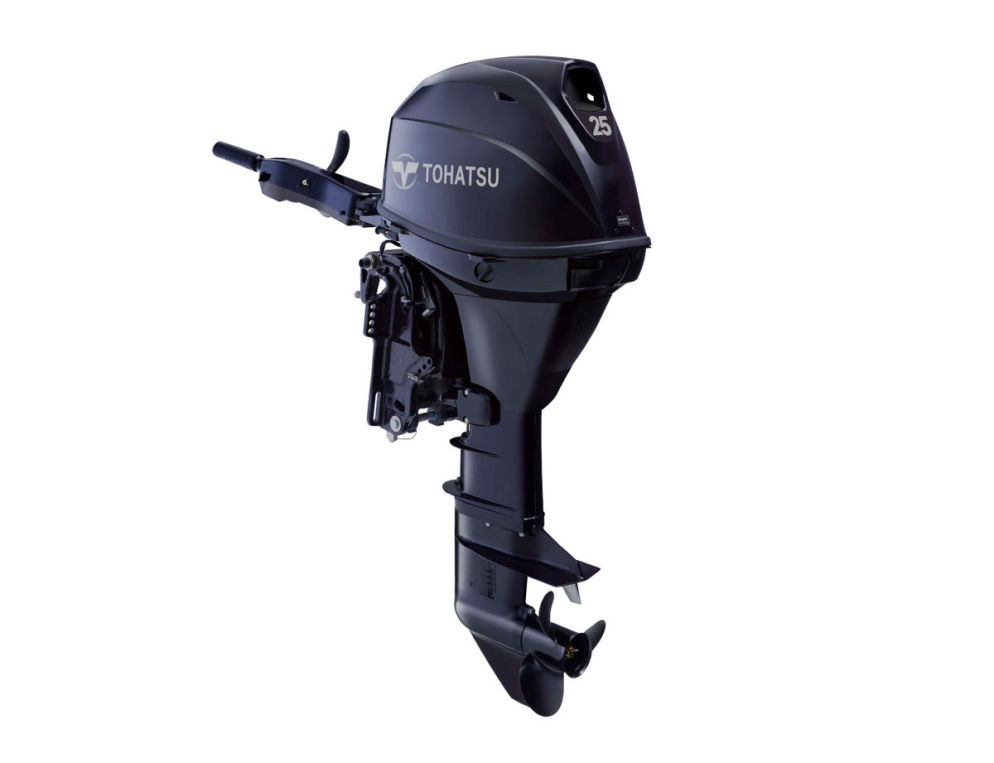
Tohatsu MFS25
Below are the the other electric outboard options we considered,
(though we are now selling our Stealth e18, for reasons, see below)
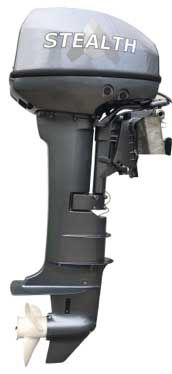
Stealth E18KW specs
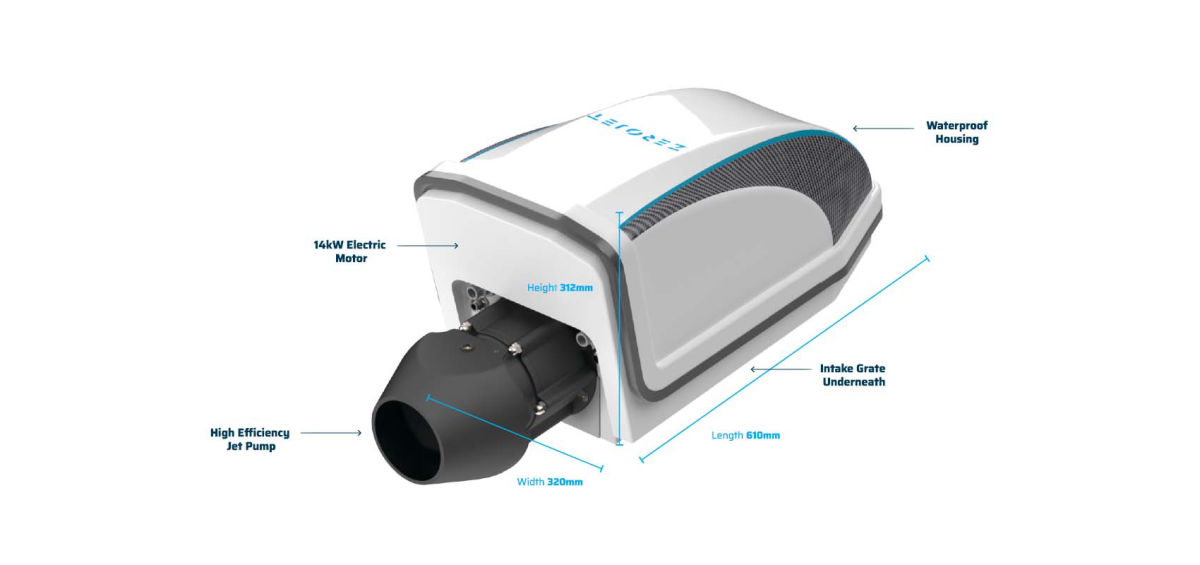
Zero Jet
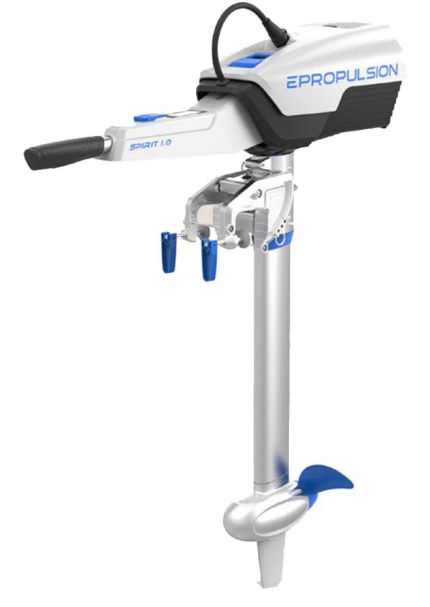
Epropulsion Spirit 1.0 Evo (we are keeping this outboard)
The new Zerojet electric outboard is exactly the option we were seeking, and we have put down a deposit on purchasing this new outboard.
Chaps
With Hypalon material tubes dinghy's can last about 10 years even in harsh tropic sun conditions. However, that doesn't mean they won't start to look a little dull and worn out over time.
Also, abrasion from lines or other things, like dragging scuba gear in and out, can damage the hypalon.
To the rescue come dinghy chaps! These are a cover you put over the tops of the tubes to protect them from abrasion and UV damage. With Chaps, we hope to extend the life or our dinghy for the entire double circumnavigation.
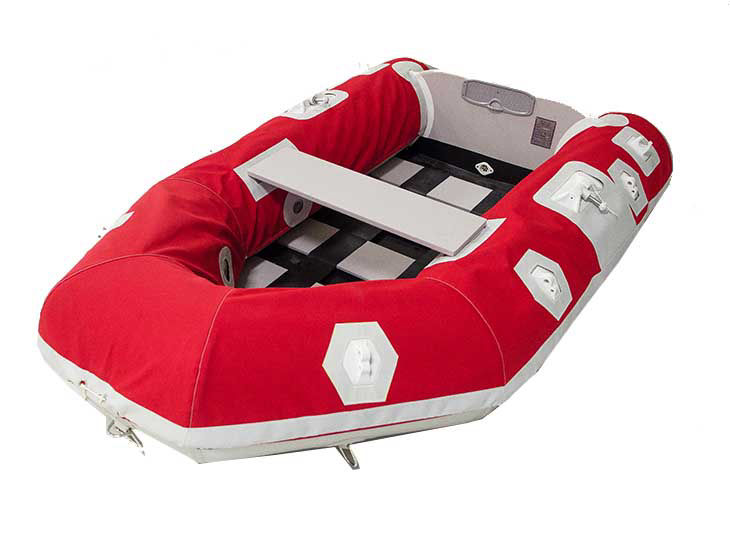
Where do you get chaps?
Unfortunately, due to variances in the locations of mounts and other protrusions, dinghies are not exactly the same. Therefore, chaps are not mass produced. That leaves two ways for us to get Chaps:
1) Hire someone, or a company, to custom make the Chaps by letting them have our dinghy for a time while the Chaps are created. This typically costs $2,000 or more!
2) Make them ourselves. Though far less expensive, this option does require us to own a sewing machine capable of sewing through multiple layers of thick UV resistant materials. However, we already plan to purchase such a machine for sail repairs and other needs. So, now it is just down to the knowledge and labor of sewing these chaps. Fortunately, there are 'how to' videos available, so that covers the knowledge, so we just need to set aside the time. Fortunately, two of our crew members are good at sewing!
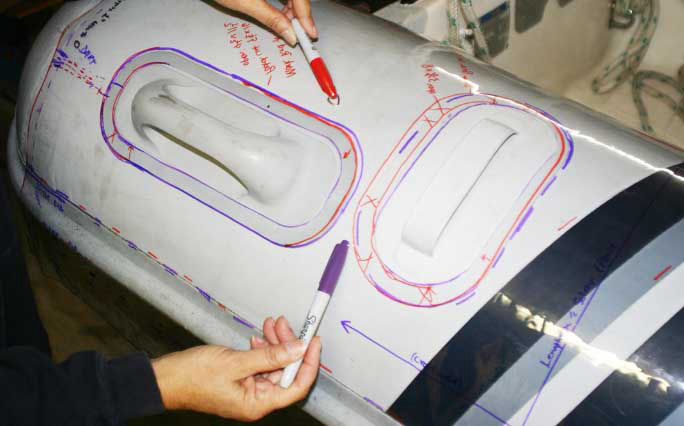
These help you pull a relatively heavy dingy up onto a beach by letting wheels take up a large portion of the weight. The wheels are mounted to the outside of the dingy transom. When not in use, they can be retracted upwards so that they don't drag in the water. When approaching shore, the wheels can be extended down so that you are ready to pull the boat up on to the beach.
Here is our choice for boat wheels for our dinghy:
BeachMaster
* The Patented BEACHMASTER Autolock system is light and strong as well as being extremely fast, easy and clean, and may be operated without touching the wheels.
* Beachmaster boat wheels unique over-center locking mechanism compactly encapsulates and locks the wheel against the transom when retracted, then extends in use to form a cross braced frame for high strength in all directions.
* They are designed to be used with outboards in shallow water drive mode so they can be operated close to shore.
* Their very fast and easy to use auto-locking action up and down is an essential feature for launching and landing on surf beaches and fast flowing rivers or when conditions afloat are rough.
* A reassuring click instantly lets you know the wheels are securely locked home in both the up and down positions.
* The retracted wheel is locked and prevented from spinning which provides a secure handhold for safety when working around the outboard.
* The easy to reach non-jamming up-and-away motion of the mechanism enables the wheels to be deployed and retracted in the shallowest possible water. Beachmaster dinghy wheels are not jammed by the buoyancy of the tire or grounding as can be the case with other systems.
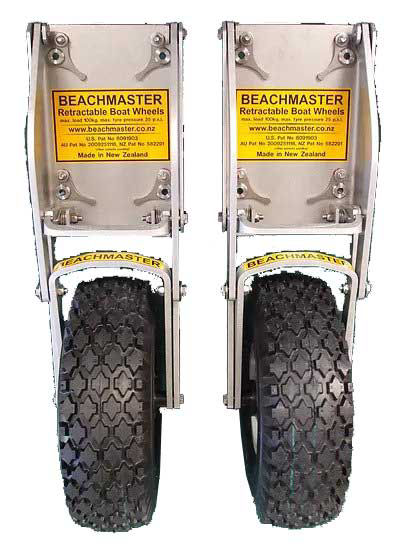
* The low visual profile and compact retracted position of beachmaster dinghy wheels against the transom allows for normal unhindered operation the boat and outboard motor. The wheels are quiet and smooth running and are large, quality, Nylon reinforced, 4 ply rated pneumatic tires (10.5" diameter) with polypropylene rims and nylon bearings for durability in marine environments, using Butyl tubes for reliability.
* Being self contained there are no separate parts to stow or lose or pins to fit. They are always instantly ready for action.
* For strength, durability and light weight the wheel system is manufactured with marine grade boat building Aluminum.
* The mounting bracket measures 5.5" x 8" and is effectively designed to distribute the wheel loads to 4 widely spaced bolts.
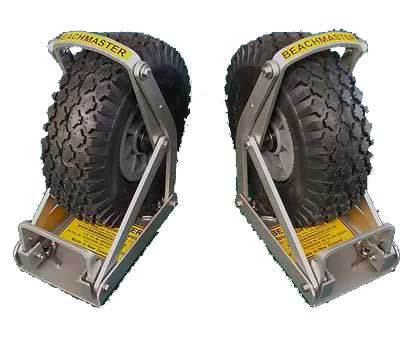
* Recommended for boat lengths up to 12 feet. (3.6 m) [ours: exactly 12']
* Recommended for gas outboards up to 15 hp which weigh about 85 pounds. Our electric outboard is: 20 hp, but it only weighs 85 pounds, but more of the time we are beaching the boat we will be using our 3 hp, 43.4 ePropulsoin Spirit 1.0 Evo!
* Maximum load limit 440 lbs (200 kg)/set on hard smooth surfaces for both fixed and removable mount types. Our heavy version of the dinghy weighs: 480 pounds (with full tank of gas), but we would rarely, if ever, be on the hard with our dinghy in this heavy configuration. Our light version weighs 244 pounds.
* Recommended tire pressures 5psi (soft surfaces) to 15psi (hard surfaces).
* Mount Weight: 10.5 pounds (4.8 kg) per set of two.
We looked at all the options for wheels to beach our RIB and the clear choice for quality and function are the Beachmaster wheels. Their is even an option for a removable mount, which we went with since it offers us some options in configuration. We posted a video about mounting the wheels and will put a review video of the Beachmaster Wheels once we get to sea trials early in 2023.
AI Website Generator